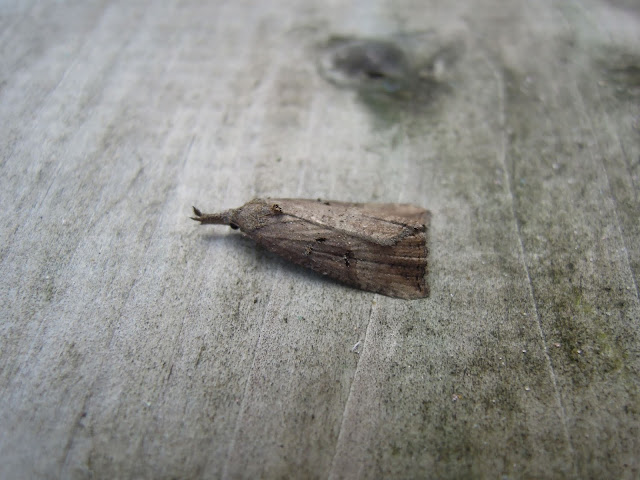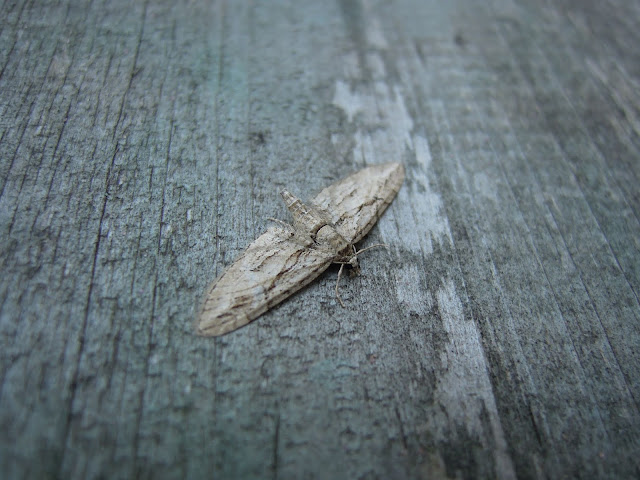After trapping the previous night where there were strong gusts, the continued mild overnight temperatures (and lighter winds)convinced me that I should try again. I was glad that I did despite torrential downpours when opening up the trap...three new species for the garden is rather unexpected in mid October. Overall, c.115 moths of 34 species was an almost unprecedented return for this time of year.
[485] Rhomboid Tortrix
[486] Olive-tree Pearl
[487] Brindled Green
The clear headliner was the Olive-tree Pearl (Palpita vitrealis) which is a scarce migrant nationally with only a handful of Cambridgeshire records. It was the last moth located in the trap and nearly escaped my clutches.
A couple of Acleris type tortrix had me stumped for a while - they are somewhat different to each other but both are clearly the the rather variable Rhomboid Tortrix. A supposedly common species that wasn't really on my radar - wonder if I've overlooked them previously?
Brindled Green is normally noted as a common moth in the autumn but doesn't appear to be so here. This is just my second record in the village with the previous one being in late September 2018.
Amongst many other autumn species there were seven Green-brindled Crescent which is by far the most I've caught in one night. Both forms (standard and the melanic f. capucina) were represented:
[485] Rhomboid Tortrix
[486] Olive-tree Pearl
[487] Brindled Green
The clear headliner was the Olive-tree Pearl (Palpita vitrealis) which is a scarce migrant nationally with only a handful of Cambridgeshire records. It was the last moth located in the trap and nearly escaped my clutches.
 |
| Olive-tree Pearl Palpita vitrealis |
 |
| Rhomboid Tortrix Acleris rhombana |
 |
| Brindled Green Dryobotodes eremita |
Amongst many other autumn species there were seven Green-brindled Crescent which is by far the most I've caught in one night. Both forms (standard and the melanic f. capucina) were represented:
 |
| Green-brindled Crescent Allophyes oxyacanthae |






